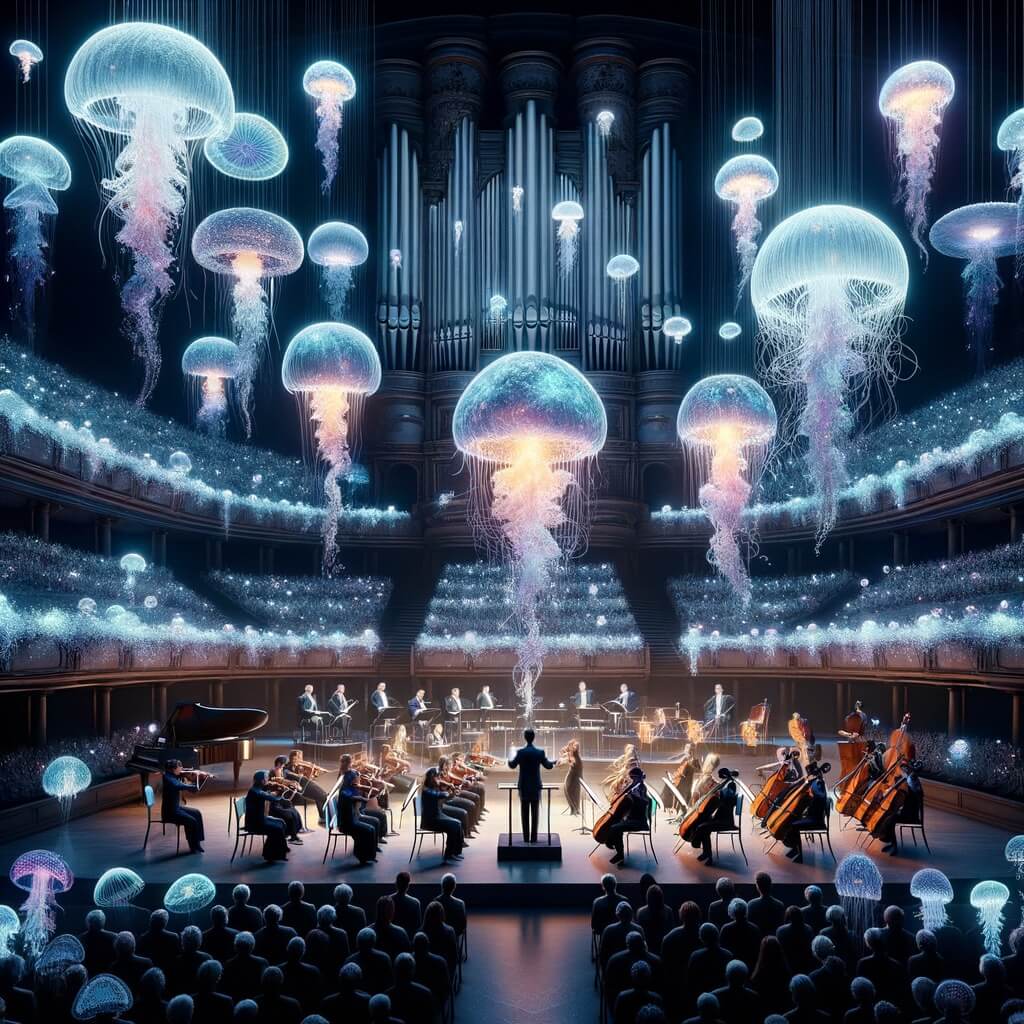In a world where the pursuit of new knowledge and experiences often leads us down well-trodden paths, the intersection of seemingly disparate fields can spark a revolutionary new perspective. Imagine combining the enchanting phenomenon of biofluorescence with the emotive power of classical music. This fusion not only inspires a sensory feast but also offers profound insights into the interconnectedness of nature and human expression.
The Concept: Illuminating Harmony
Biofluorescence, the ability of organisms to absorb light and re-emit it as a different color, transforms environments into vivid landscapes of glowing hues. Predominantly seen in marine life, such as jellyfish, corals, and some fish species, biofluorescence is a spectacle of survival and communication in the ocean depths.
Classical music, with its intricate harmonies and dynamic ranges, moves human emotions and transcends the ordinary auditory experience. The compositions, whether serene or stirring, allow listeners to feel a deep connection to the music’s narrative.
Combining these two—biofluorescence and classical music—creates a multimedia experience where light and sound coalesce to interpret and enhance each other, forming a new art form: “Illuminating Harmony.”
Visual Concerts: A Symphony of Light and Sound
Imagine attending a concert where the music of Bach or Beethoven is not only heard but seen. As the orchestra plays, the stage and surroundings are lit with biofluorescent-inspired visuals that respond dynamically to the music. Soft blue and green glows accompany gentle melodies, while vibrant reds and oranges burst forth in crescendos. This concert would not merely be a performance but an immersive experience that depicts the emotional depth of music through the visual medium of biofluorescence.
Scientific and Artistic Implications
1. Educational Outreach: This fusion can be used as an educational tool to teach concepts of light, wavelength, and energy in a way that captivates and inspires students. It can also introduce them to classical music, fostering an appreciation for both science and the arts.
2. Environmental Awareness: By mimicking the natural phenomenon of biofluorescence, such performances can raise awareness about marine ecosystems and the need for conservation. Each performance becomes a subtle reminder of the beauty and fragility of marine life.
3. Therapeutic Uses: The combination of soothing music and gentle glowing lights can have therapeutic effects, helping to reduce stress and improve mental health. Hospitals and wellness centers could use “Illuminating Harmony” sessions as a form of therapy.
Technical Realization
To create the biofluorescent effects in a non-marine setting, designers could use UV lights and fluorescent paints that respond to different sound frequencies and amplitudes. Advanced technology could allow these elements to be controlled in real-time by the music’s dynamics, creating a live ‘light-score’ that accompanies the music.
Collaborative Opportunities
This concept opens the door for collaborations between marine biologists, musicians, lighting technicians, and digital artists. Each discipline contributes its expertise, leading to a richer final product that could be adapted for concerts, installations, educational programs, or even therapeutic environments.
Conclusion: A Convergence of Worlds
The combination of biofluorescence and classical music is just one example of how blending diverse fields can lead to groundbreaking ideas and creations. “Illuminating Harmony” not only promises a feast for the senses but also embodies the deeper connection between natural phenomena and human creativity. In merging science with art, we find new ways to perceive and interpret the world around us, proving that innovation often lies in the union of the unexpected.
